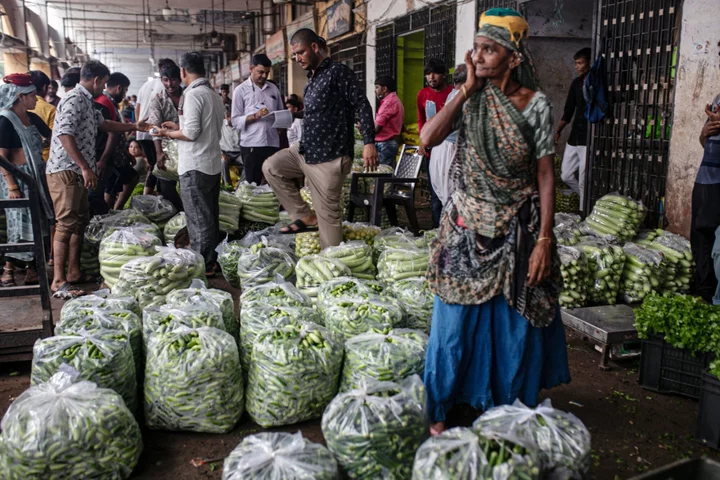India’s inflation eased for a third straight month in October, although it’s likely to bring only temporary relief to policymakers still worried about rising food costs before elections.
The consumer price index rose 4.87% from a year earlier, statistics ministry data showed Monday, down from 5.02% in September, but slightly higher than economists had estimated.
The mild slowdown came mainly from an easing in core inflation as prices of clothing, household goods, and healthcare eased. Food prices, which make up about half of the consumer basket, remained high, the data showed.
Reserve Bank of India Governor Shaktikanta Das last week warned about the risk of food price shocks, suggesting policymakers will remain vigilant.
“We expect the Monetary Policy Committee to maintain a hawkish tone,” with no change in interest rates and the policy stance at the next policy meeting, Aditi Nayar, chief economist of ICRA Ltd., said in an email. Inflation is likely to climb to 5.6% by December and remain in a range of 4.9%-5.6% in the next two quarters, she said.
The Reserve Bank of India has kept interest rates unchanged for four straight meetings now, although it’s stuck with a relatively hawkish policy stance to keep price pressures in check. The RBI’s goal is to keep inflation at 4% on a sustained basis.
What Bloomberg Economics Says
A record low Reserve Bank of India-Federal Reserve policy rate gap means the central bank will only start monetary policy easing after the Fed starts to cut rates. Our US team expects that to happen in the second quarter of next year. Until then, we expect the RBI to maintain its hawkish hold.
Abhishek Gupta, India economist
For the full report, click here
Bonds have traded in a relatively tight range in the past month as traders expect the RBI to keep interest rates on hold for an extended time.
The moderation in inflation “provides some relief but we expect the trend of sub-5% headline inflation to remain brief,” said Upasna Bhardwaj, an economist with Kotak Mahindra Bank. The RBI will probably keep rates on hold for longer and use liquidity tools to manage risks, she said.
Food prices rose 6.61% in October from a year earlier, little changed from September. Clothing and footwear costs rose 4.31%, while housing prices accelerated 3.8%. Fuel and electricity costs fell 0.39%.
Core inflation, which strips out volatile food and energy prices, moderated to 4.25%.
Keeping food prices and inflation in check is a key priority for Prime Minister Narendra Modi and his government as election season hots up. Five states are voting in November, followed by a national election in 2024, in which Modi is seeking to win a third term in office.
The government has taken several steps in recent months to curb rising food costs, such as restricting exports of rice and sugar. The average price of onions, a key ingredient in Indian food, jumped more than 60% last month, government data showed, prompting authorities to take action to bring down costs.
The currency’s recent depreciation is another complicating factor. The rupee is down more than 1.5% against the dollar since July and hit a record low recently as the US currency strengthened. Market participants view the RBI’s recent intervention in the spot rupee market as the central bank’s effort to prevent imported inflation from hitting the economy.
“There has to be caution because food prices are inherently unpredictable and volatile in nature,” said Vivek Kumar, an economist at QuantEco Research. “The bond market will look at the core number, which gives you comfort.”
--With assistance from Ruchi Bhatia.
(Updates with comments from economists)

